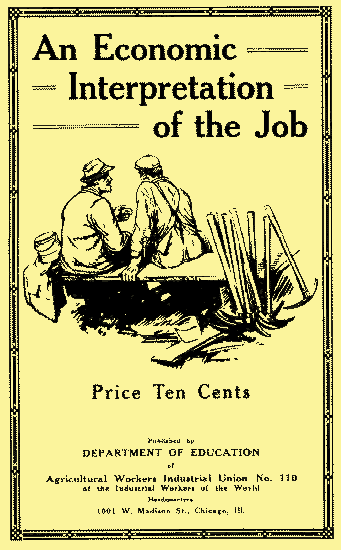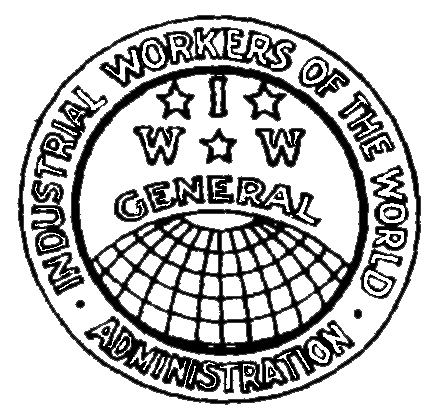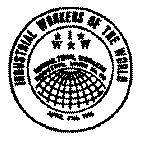
An Economic Interpretation of the Job

JUNE, 1922
Published by
DEPARTMENT OF EDUCATION
of
AGRICULTURAL WORKERS INDUSTRIAL UNION No. 110
of
THE INDUSTRIAL WORKERS OF THE WORLD
Headquarters
1001 W. Madison St., Chicago, Ill.

 | An Economic Interpretation of the Job |

Introduction
IN THE following pages the reader must be aware that, wherever a worker’s activity has been selected for the purpose of illustration, both the worker and his process typify the working class and social production; for the exploitation of wage labor is the exploitation of one class by another class—the working class by the capitalist class—and is not necessarily the exploitation of the individual worker by his employer. Unless we understand this the class struggle is only a meaningless phrase.
The Interdependence of Labor
When in this booklet a worker or a working group is referred to, as producing some article or commodity, it is necessary to understand that such reference is merely to illustrate a point. Production of any article is impossible to any worker under the capitalist arrangement of industry; the simplest article as well as the most complicated machine is the product of the entire working class. From the sulphur match to the aggregate of the world’s commodities there cannot be eliminated any classification of labor, and have the match, or the world’s wealth.
We say of the miner that he produces coal, of the baker that he produces bread, but such is not the case. They assist each other in the production of coal and bread and are at the same time dependent upon the balance of the workers for their equipment and materials. Before the miner goes down into the earth his fellow workers in every line of human endeavor have co-operatively labored to supply him with house, food, furniture, clothing, tools, powder, etc.; so that in the mining of coal all of the workers assist him. They do not go to the coal-face, but he could not go there without them. The mining of coal is therefore a social function in which all the workers participate. What the miner does is to perform the last social act necessary to transform the natural deposit into usable shape. But the coal is not yet produced—coal is not mined to be used by the miners, it is intended to warm some home or furnish power to some industry—other workers follow the miner to complete production of the coal. For no commodity is produced until it reaches the purchaser who consumes it. Only when this has happened is the objective which inspired its production attained—the satisfaction of an individual or social need.
The Miner, a Typical Illustration Only
The miner has been used for illustration here, but you can substitute for him the farmer, logger, sawyer, bricklayer, teamster, etc., and no matter which of these you select a study of his activities will show that he works in conjunction with and cannot function without the balance of the working class. Capitalist industry has so organized the workers that their mutual inter-dependence is its outstanding feature. There is no independence for either the individual or the group. As a class they labor and produce; as a class they are exploited, and as a class they must organize, and through a class organization only will they be enabled to achieve any betterment in the present or emancipation finally.
 DEPARTMENT OF EDUCATION.
DEPARTMENT OF EDUCATION.
A. W. I. U. No. 110
To read on click HERE
No comments:
Post a Comment